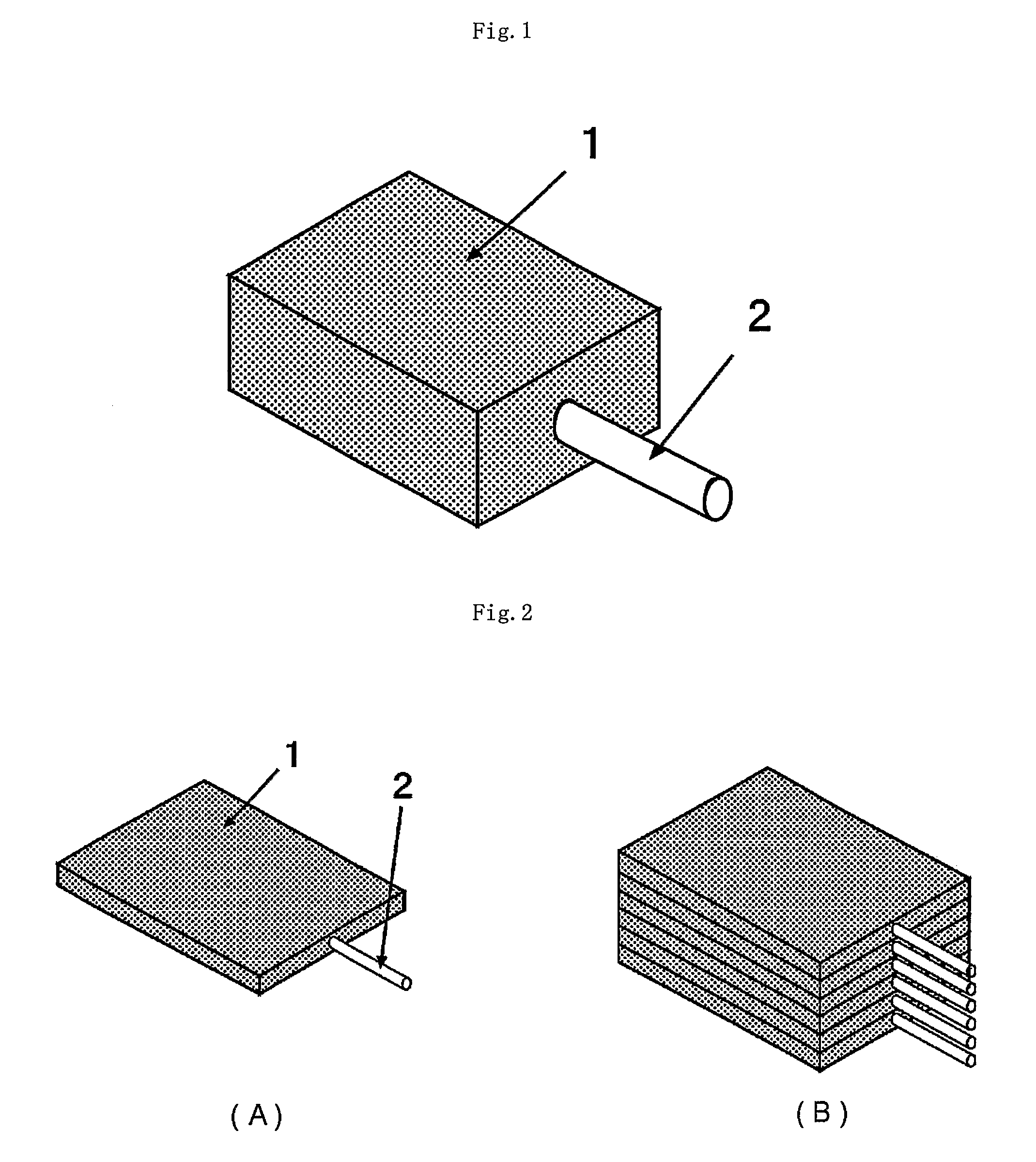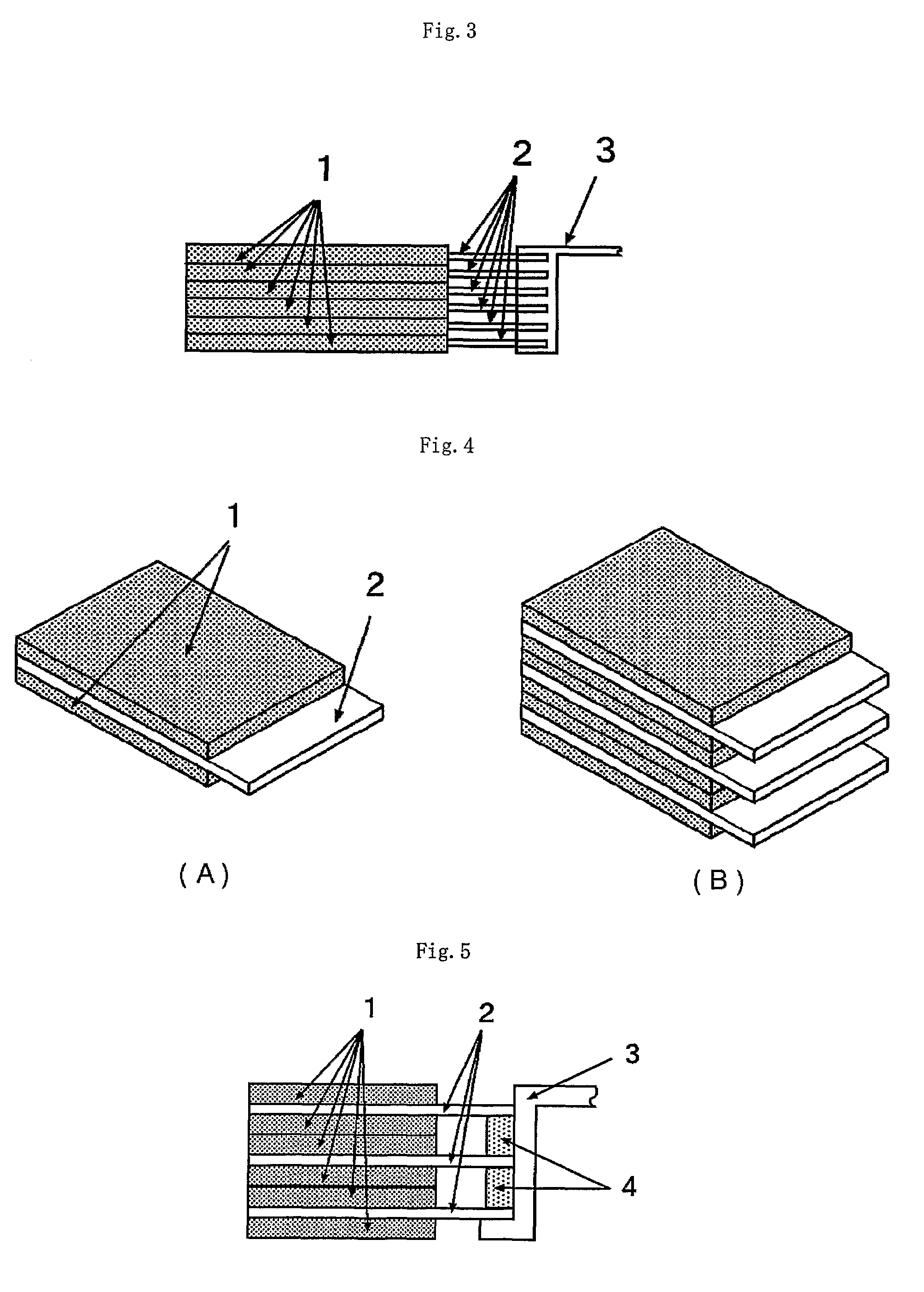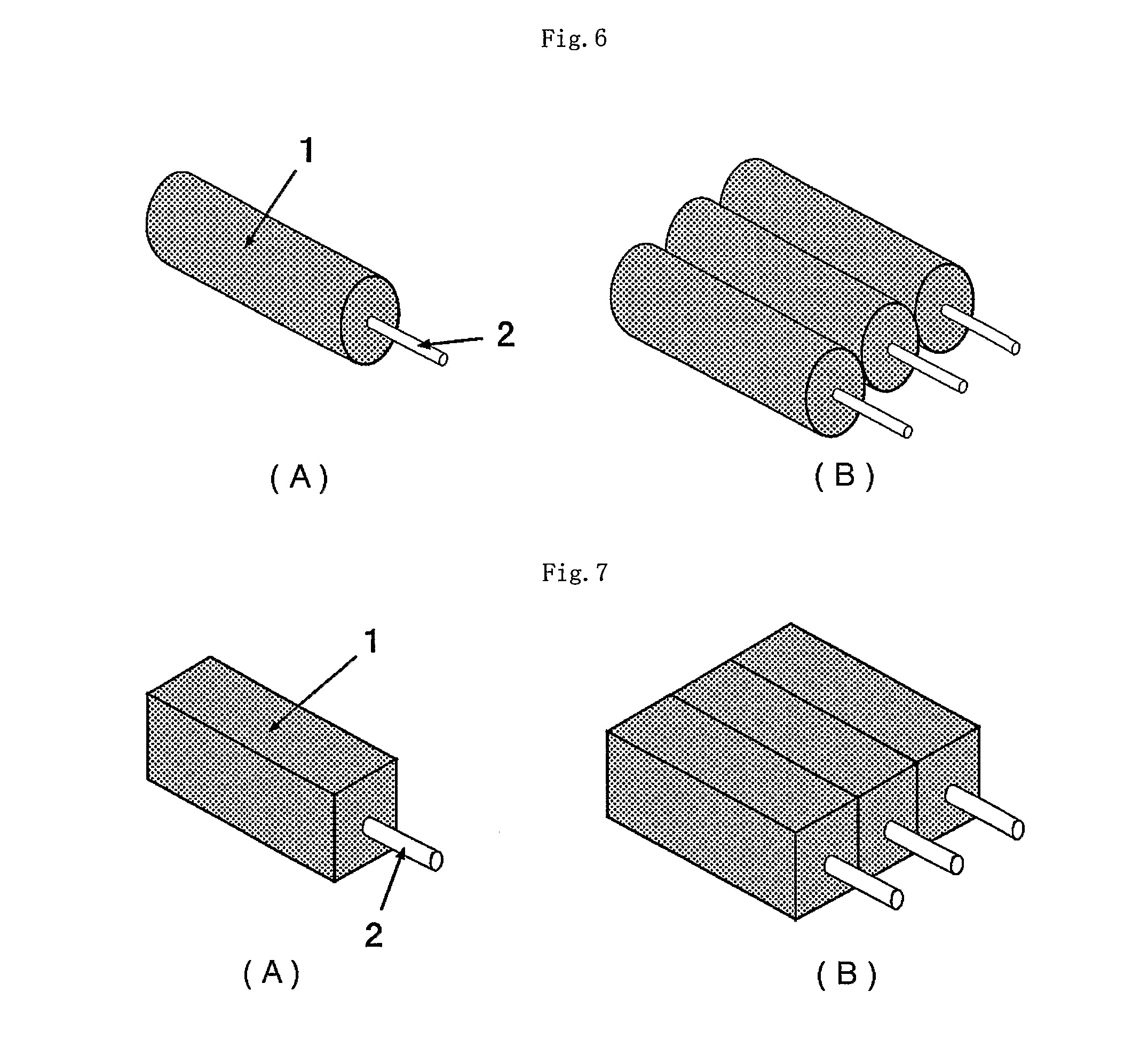Porous anode body for solid electrolytic capacitor, production method thereof and solid electrolytic capacitor
a technology of porous anodes and solid electrolytic capacitors, which is applied in the direction of electrolytic capacitors, liquid electrolytic capacitors, electrolytic capacitors, etc., can solve the problems of insufficient impurity impregnation of solid electrolyte into small pores, inability to form uniform pores, and inability to produce uniform pores. , to achieve the effect of low esr, good tan characteristics, and high capacitan
- Summary
- Abstract
- Description
- Claims
- Application Information
AI Technical Summary
Benefits of technology
Problems solved by technology
Method used
Image
Examples
example 1
[0160]A mixture powder having an average particle size of 120 μm, which contains 80 parts by mass of niobium powder having an average particle size of 0.5 μm, containing 12% by mass of oxygen; 10 parts by mass of calcium oxide having an average particle size of 0.9 μm; and 10 parts by mass of calcium oxide having an average particle size of 2 μm, was prepared.
[0161]In a solution prepared by dissolving 40 g of camphor into 1 litter of toluene, 900 ml of the mixture powder having an average particle size of 120 μm and 100 ml of calcium oxide having an average particle size of 30 μm were added and mixed well. Then, toluene was distilled off at about 60° C. under reduced pressure of about 1×102 Pa, thereby obtaining a mixture powder containing niobium, calcium oxide, and camphor. Furthermore, this mixture powder was automatically molded together with a niobium wire of 0.3 mm in diameter so as to be one approximately measuring 3.3 mm×1.8 mm×4.3 mm (about 25 mm3). The niobium-corrected de...
example 2
[0165]A mixture powder having an average particle size of 90 μm, which contains 70 parts by mass of niobium powder having an average particle size of 0.5 μm, containing 15% by mass of oxygen; 15 parts by mass of barium oxide having an average particle size of 0.7 μm; and 15 parts by mass of barium oxide having an average particle size of 2 μm, was prepared.
[0166]In a solution prepared by dissolving 40 g of camphor into 1 litter of toluene, 900 ml of the mixture powder having an average particle size of 90 μm and 100 ml of barium oxide having an average particle size of 20 μm were added and mixed well. Then, toluene was distilled off at about 60° C. under reduced pressure of about 1×102 Pa, thereby obtaining a mixture powder containing niobium, barium oxide, and camphor. Furthermore, this mixture powder was automatically molded together with a niobium wire of 0.20 mm in diameter so as to be one approximately measuring 0.4 mm×1.8 mm×4.3 mm (about 3.1 mm3). The niobium-corrected densit...
example 3
[0172]A mixture powder which contains 90 parts by mass of niobium powder having an average particle size of 0.5 μm, containing 9% by mass of oxygen; 6 parts by mass of magnesium hydroxide having an average particle size of 0.7 μm; and 10 parts by mass of magnesium hydroxide having an average particle size of 2 μm, was prepared.
[0173]A slurry liquid was prepared by adding 900 ml of a mixture powder having an average particle size of 90 μm and 100 ml of magnesium hydroxide having an average particle size of 10 μm to a solution prepared by dissolving 40 g of camphor in 1 litter of toluene and stirring the mixture well. Next, a mask having a thickness of 0.2 mm and having a plurality of openings in a lattice-like pattern for the formation of a powder-sintering layer of 3.3 mm×4.3 mm was mounted on a niobium foil having a thickness of 50 μm. Subsequently, the slurry liquid was applied onto the surface of the lattice-shaped mask while being discharged from a die-coating mold attached on t...
PUM
| Property | Measurement | Unit |
|---|---|---|
| thickness | aaaaa | aaaaa |
| temperature | aaaaa | aaaaa |
| temperature | aaaaa | aaaaa |
Abstract
Description
Claims
Application Information
 Login to View More
Login to View More - R&D
- Intellectual Property
- Life Sciences
- Materials
- Tech Scout
- Unparalleled Data Quality
- Higher Quality Content
- 60% Fewer Hallucinations
Browse by: Latest US Patents, China's latest patents, Technical Efficacy Thesaurus, Application Domain, Technology Topic, Popular Technical Reports.
© 2025 PatSnap. All rights reserved.Legal|Privacy policy|Modern Slavery Act Transparency Statement|Sitemap|About US| Contact US: help@patsnap.com



